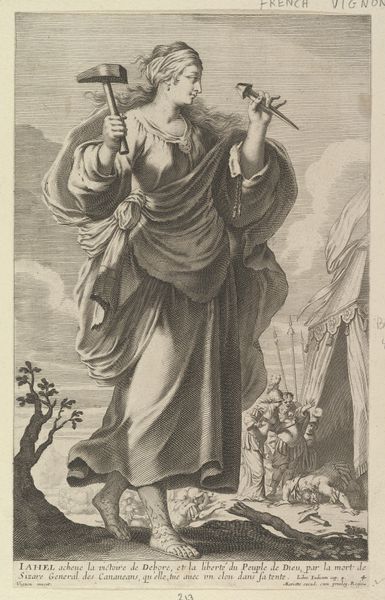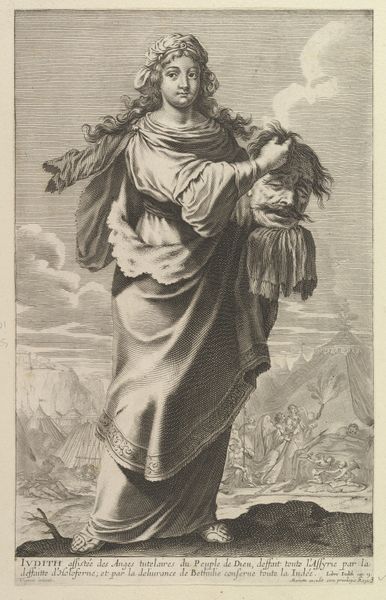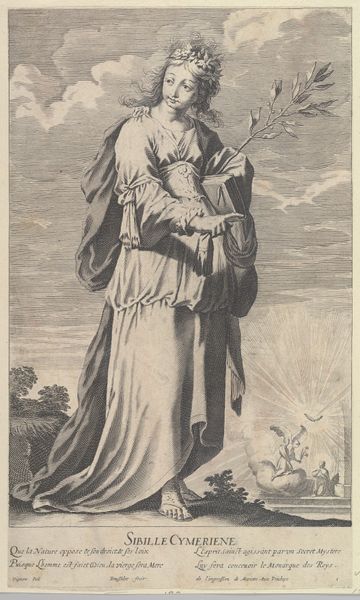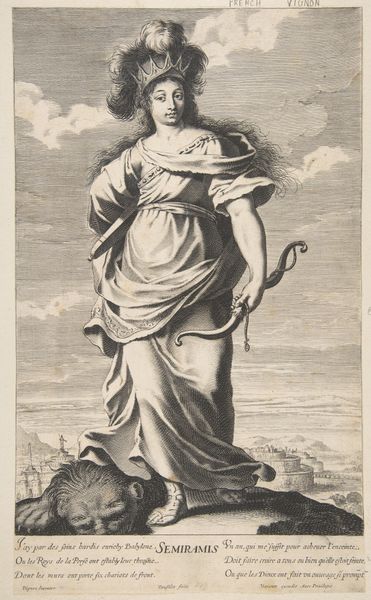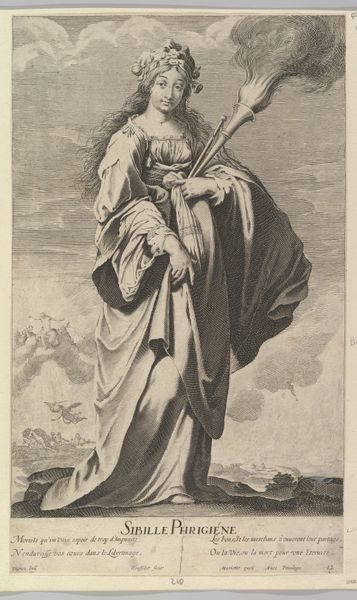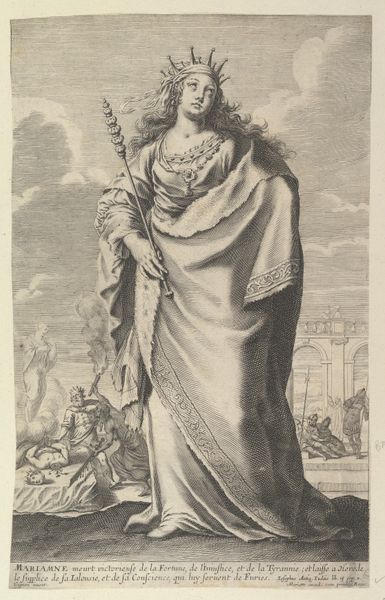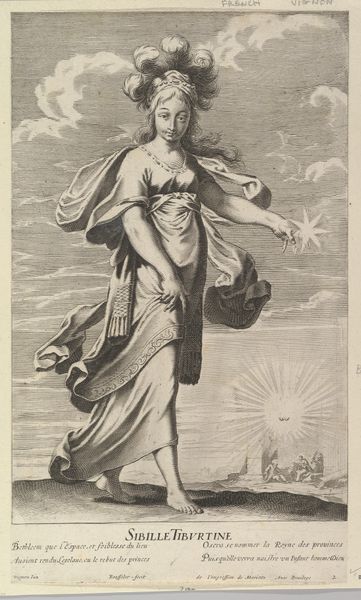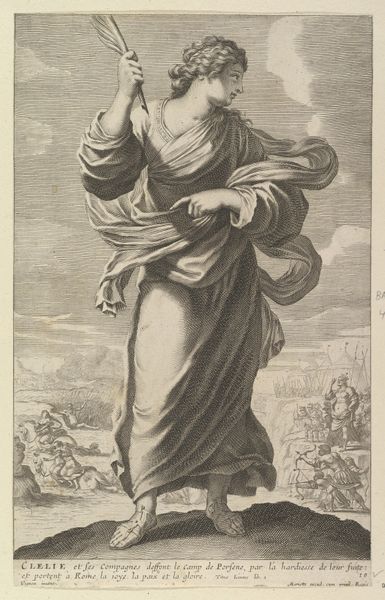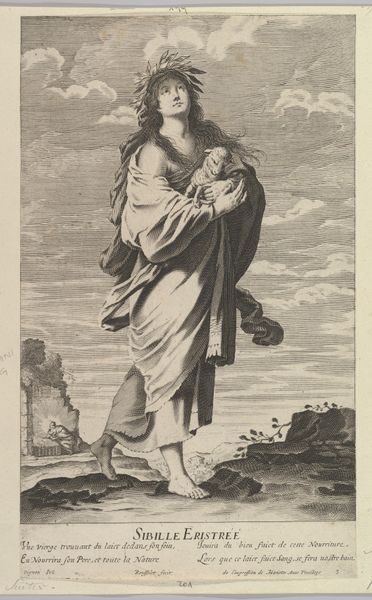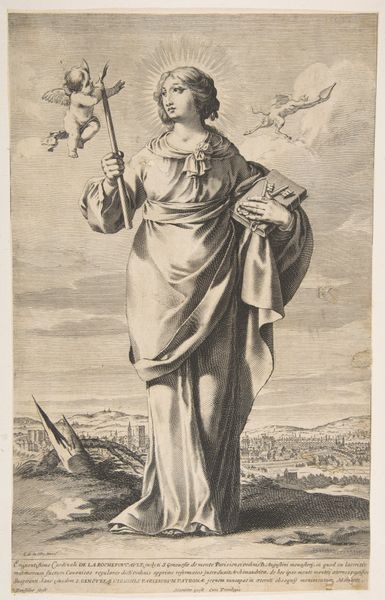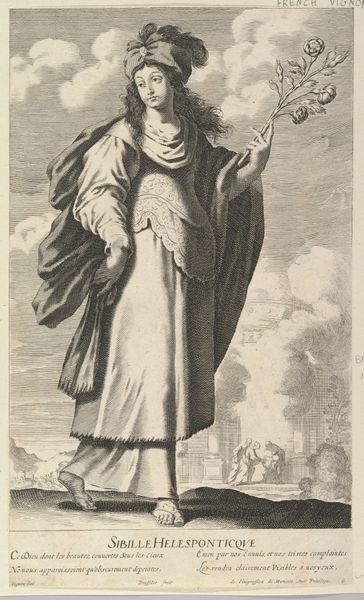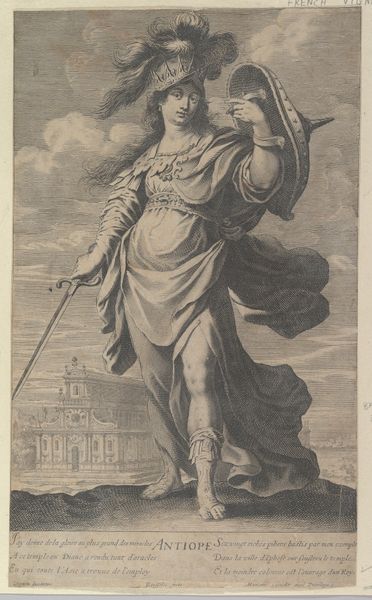
drawing, print, engraving
#
portrait
#
drawing
#
allegory
#
baroque
# print
#
figuration
#
history-painting
#
engraving
Dimensions: sheet: 14 1/8 x 8 3/8 in. (35.8 x 21.3 cm)
Copyright: Public Domain
Editor: This engraving, "Sibylle Lybique," by Gilles Rousselet, dated sometime between 1630 and 1640, features a figure holding a broken chain and a branch, while what looks like a battle rages in the background. I find the contrast between the serenity of the central figure and the chaos behind her very striking. What do you see in this piece? Curator: I see the strategic use of classical allegory within a specific socio-political context. The Sibyl, a figure of prophecy in antiquity, is here deployed to comment on power, likely within the French court or its artistic circles. Notice how the figure presents not just prophecy, but *liberation* – holding broken chains while standing above a scene of conflict. The Baroque style emphasizes dramatic effect and grandeur, which aligns with projecting an image of authority. The engraving itself – a medium accessible to a broader public – asks: Who is being liberated, and what political message is embedded in this representation of freedom? Is it truly universal, or does it serve a specific agenda? Editor: So it's not just about depicting a classical figure, but using that figure to say something about contemporary events or power structures? Curator: Precisely. The choice of the Sibyl, her attributes, and the scene behind her would resonate with an educated audience familiar with classical literature and current affairs. The print becomes a form of political rhetoric, circulating ideas about freedom, perhaps in relation to conflicts or societal issues of the time. What could those be, judging by what we can see around the main figure? Editor: It makes you wonder about the artist’s position, doesn’t it? I hadn't considered that an image could be so directly involved in public discourse. Curator: It prompts us to think about the public role of art and the artist's agency. I see much more to consider now. Thank you!
Comments
No comments
Be the first to comment and join the conversation on the ultimate creative platform.

